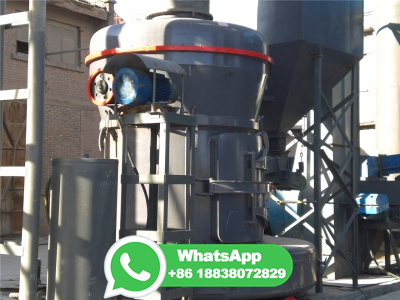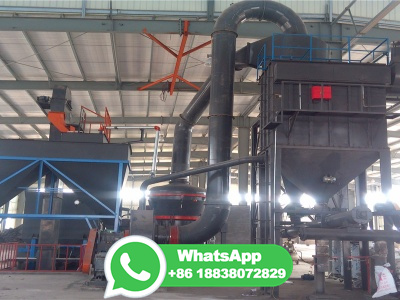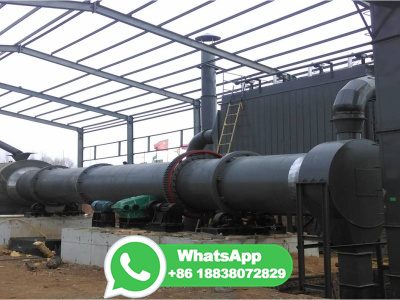
Formulating your own cold process soap recipes is easy! The key is to start simple and go from there. Learn more below, and find cold process soap making supplies here. You can never go wrong with a 34/33/33 ratio. That's 34% olive oil, 33% coconut oil, and 33% palm oil. They're commonly used because they complement each other well.
WhatsApp: +86 18838072829
Instructions. Measure out the lye and the water in separate, nonreactive containers, using a digital scale. Mix the lye and the water and stir until dissolved, adding the lye to the water, never the other way around. The lye solution will heat up as the result of a chemical reaction. Be careful of fumes, heat, and the corrosive solution.
WhatsApp: +86 18838072829
Cold process soap making does not require an external heat source, takes longer to saponify, and produces shiny, hard bars. However, the hot process requires an additional heat source, saponifies quickly, and creates a rusticlooking bar. Both soap making methods have similarities, but they differ in many ways.
WhatsApp: +86 18838072829
With an immersion blender, combine your lye water and melted oils. At trace, add the essential oils and then blend again. Place your mica powder on one side of the bowl and the charcoal on the other. Mix in place with the immersion blender. Use a spatula to drag each colour across the bowl once. Pour into soap mold.
WhatsApp: +86 18838072829
If you're a cold process soaper, you've heard the term "trace.". Simply put, "trace" refers to the point in soapmaking when the lye water and oils have emulsified and won't separate. There are different types of trace, including thin and thick trace, which refer to the consistency of the soap. Learn more in this post.
WhatsApp: +86 18838072829
Keep these considerations in mind while crafting your perfect cold process soap recipe, and experiment with different combinations of oils, designs, and features to create a truly unique and enjoyable bar of soap. Happy soap making! Mixing and Tracing Combining Ingredients. When making cold process soap, start by mixing your lye solution with ...
WhatsApp: +86 18838072829
Once cold, add the frozen milk and allow to dissolve slowly into the lye solution. The goal is to keep the temperature as low as possible, and definitely below 100 degrees Fahrenheit, which will prevent discoloration. A variety of handmade goat's milk soaps. Photo by Melanie Teegarden.
WhatsApp: +86 18838072829
Mix the soap batter with your stick blender until you reach a light trace. 9. Once the soap just begins to trace, weigh out the fragrance oil. Now add the orange spice tea scent to the soap batter. Continue mixing to fully incorporate the fragrance into the soap batter. 10.
WhatsApp: +86 18838072829
Soap design 2. Inthepot (ITP) swirls. Skill level: Easy. Mold: Loaf mold. Inthepot (ITP) swirl is also a simple soap swirl technique. The cold process soap mixture is divided into two or more parts, each dyed differently and, as the name implies, these are mixed 'in the pot' as opposed to in the mold.
WhatsApp: +86 18838072829
Add 1 tablespoon of distilled water and cover. Allow the soap to cook, stirring occasionally, until it has melted into a homogenous solution. Add olive oil, 1 ounce at a time, to the solution and stir well. Cook for an additional 15 minutes, then check the pH. Continue this process until the soap tests with a pH of 8.
WhatsApp: +86 18838072829
These are my favorite 3 Cold Process soap recipes that I tend to stick to when making soap for classes, family and friends. The Avocado Moisturizing Bars from the Soap Crafting Book. Lots of Lather. (my most favorite, tried and true, teach this in every class, really, really hard soap bar) 16 oz. Coconut Oil. 16 oz. Palm Oil.
WhatsApp: +86 18838072829
This is a cold process and zerowaste soap recipe that makes use of drippings from cooked meat and includes instructions on how to render fat. The bars are pure white, ... This 1lb (454g) cold process recipe makes six bars when using the recommended cavity soap mold. Use the toggle below to double or triple the batch. The recipe also has a 5% ...
WhatsApp: +86 18838072829
These bars are created with rebatch soap base. Rebatching refers to melting grated cold process soap over low heat. The soap can then be customized with color and fragrance. The Luxury Rebatch used in this project contains a skinloving blend of oils and butters such as shea butter and olive oil. It's made fresh so it's easy to melt down.
WhatsApp: +86 18838072829
If you want a relaxing, therapeutic fragrance combination, but want to extend the scent's life in cold process soap, try mixing lavender oil with chamomile and patchouli or oakmoss. For a refreshing, fruitywoodsy scent with excellent staying power, combine 10x orange oil, juniper, and Peru balsam.
WhatsApp: +86 18838072829
How to Add to Soap. Coffee Grounds. 1 tablespoon per pound of oils, use more or less depending on desired amount of exfoliation. Exfoliation color. You can toss coffee grounds in lye water to pull out color or simply add to oils before mixing in lye solution. Orange Peel Powder. 1 teaspoon per pound of oils, use more or less depending on ...
WhatsApp: +86 18838072829
Cold process soap is made at 3050°C, while hot process soap is made at 50100°C. Saponification. In the "cold" method, the saponification process takes up to 48 hours and occurs after the soap paste is poured into the mold. In the "hot" method, on the other hand, it takes place during slow cooking. Time.
WhatsApp: +86 18838072829
Put on rubber gloves, eye protection, and an apron. Carefully premeasure the ingredients. The solid oils into the pot, the liquid oils into a jug, the water into another heatproof jug, and the lye in another container. Prepare the recycled soap mold.
WhatsApp: +86 18838072829
Traditional cold process soap recipes are fairly easy, techniquewise, but there are still quite a few steps involved and the soap has to cure for 30 days before use. Hot process soap cuts down some on the wait time, but it still much more labor and equipment intensive. As I hinted above, I am definitely the instant gratification type when it ...
WhatsApp: +86 18838072829
Melt the oil and butters. Measure the oils separately, then combine them in a large pot. Melt the over mediumlow heat until the shea butter is fully melted. Set aside to cool. Stick blend to trace. Once the coffee solution and oils have both cooled to about 100115 degrees, it's time to blend.
WhatsApp: +86 18838072829
Purchase options and addons. RAISE THE BAR on your shower with our sudstastic 3pack of cold process natural soap featuring a selection of manly scents including: Fresh Falls, Wood Barrel Bourbon, and Birchwood Breeze. NATURAL COLD PROCESS SOAP Made in the USA using a traditional cold process and with nourishing natural ingredients like ...
WhatsApp: +86 18838072829
3) Understanding temperature to control trace in cold process soap. 4) Know when NOT to use the stick blender. 5) Lower the water content, and control trace in cold process soap. 6) Reduce or avoid accelerants. 7) Consider softer or slower moving oils. A quick guide for controlling accelerating soap batter.
WhatsApp: +86 18838072829
Set aside, and let cool for up to an hour. While the lye solution is cooling, weigh oils or solid butters. Melt with a doubleboiler until up to 100 degrees. Pour the lye solution into the container of oils. Stir until trace is reached. (Trace refers to the point when the oils and lye solution have emulsified.
WhatsApp: +86 18838072829
For Cold Process Soap Thoroughly stir the clay, water, and essential oil mixture into the soap. Pour the soap batter into a prepared soap mold, cover with a sheet of wax paper, and then the mold's lid or a piece of cardboard. Tuck a towel or quilt around the mold to help hold the heat in. Let the soap stay in the mold for 24 to 48 hours, then ...
WhatsApp: +86 18838072829
Both cold process and hot process soap starts out being mixed the same way. The only difference is that cold process soap doesn't have extra heat applied, so needs 24 to 48 hours in a mold to finish the saponification process (the chemical reaction of soapmaking). Hot process soap is heated, usually in a crockpot, which speeds up that initial ...
WhatsApp: +86 18838072829
Once you're happy with the top of the soap, sprinkle lavender buds on the top of the soap. Spritz the top of the soap with 99% isopropyl alcohol. The soap needs to sit and harden in the mold for 23 days. It can be hard to wait, but it's worth it! After two days, pull the sides of the mold away from the soap.
WhatsApp: +86 18838072829
Tips when stamping cold process or hot process soap. Start with a clean stamp, free from any leftover soap from previous use. If needed, wash the stamp with an old toothbrush to scrub any hardtoclean spots. Position the stamp on the bar of soap then firmly press it into the surface, being sure that all four corners are evenly pressed.
WhatsApp: +86 18838072829
The lifetime of cold process soap can vary depending on the oils used in the recipe, but typically they should last for around a year. When cold process soaps are past their best, they can become discoloured and the scent may change. When to cut cold process soap. There's no set timeframe for when cold process soap is ready to cut.
WhatsApp: +86 18838072829
Add Clay to Hot Process Soap. Hot process soap making is a little different from cold process, but you use the same methods for adding clay. When making a singlecolored hot process soap recipe, add the clay to the lye solution. For marbled or swirled soap, premix the clay with three times its amount in water.
WhatsApp: +86 18838072829
Cold process soap making does require some experience because of the chemistry and ingredients involved. If this is your first time, I have shared the steps along with photos to guide you in this post on how to make cold process soap. Hot Process similar to cold process. I make soaps infused with tea, beer, and wine using this method.
WhatsApp: +86 18838072829
Use 1 teaspoon of sodium lactate per pound of oils in the recipe. For this recipe, you'd add about sodium lactate. Once you've reached a thin trace, split the soap into six equal containers. Each container will contain about 300 mL. To each container, add the amount of dispersed colorants listed below.
WhatsApp: +86 18838072829
Cold process soap is known for its hard, long lasting quality. Depending on the oils used, the bar can have great lather (coconut oil has excellent lathering properties), be incredibly mild (olive oil is renowned for its gentle qualities) or be very moisturizing (with the addition of oils, such as shea and cocoa butter or hemp oil).
WhatsApp: +86 18838072829